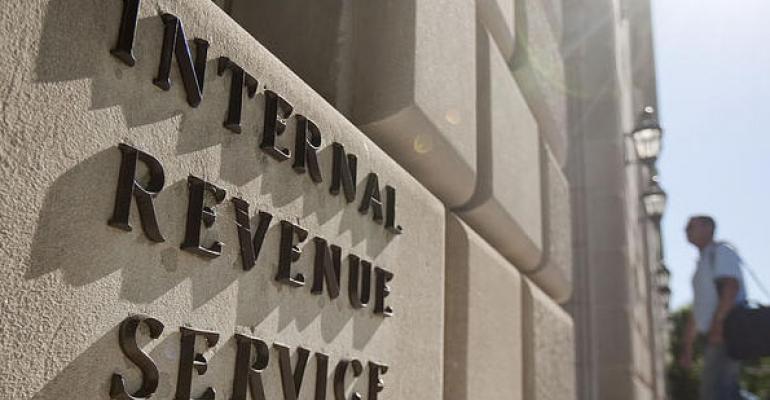In Private Letter Ruling 201714002 (released April 7, 2017), the Internal Revenue Service ruled that a trust didn’t qualify as a charitable remainder trust (CRT) because it distributed more than its annual net trust income to its unitrust beneficiary and thereby failed to operate in accordance with its governing instrument. In addition, since it was a split-interest trust under Internal Revenue Code Section 4947(a)(2), the IRS ruled that the court-ordered termination of the trust would trigger excise taxes for self-dealing and taxable expenditures to the extent that it preceded the termination of the trust’s private foundation (PF) status, with potential transferee liability and foundation manager taxes looming as well. The ruling is a cold reminder of the importance of communication, managing expectations and supervision in the administration of trusts.
Where it Began…
A and B, the would-be settlor and successor beneficiary, approached C, an advisor, seeking advice about their estate planning and charitable giving goals. In response, the advisor pitched a charitable remainder unitrust of the “net income with make-up provision” variety (NIMCRUT) and enlisted the assistance of D, an attorney. The settlor and successor beneficiary went ahead with the proposed arrangement: the settlor funded the trust, using low-basis capital assets, and the settlor and successor beneficiary agreed to serve as co-trustees of the trust, with the settlor benefiting from the unitrust interest initially for the shorter of his lifetime or 20 years. If the settlor died within the 20-year term, then the successor beneficiary would succeed to the unitrust interest, and the successor beneficiary’s spouse could later follow the successor beneficiary if the latter also died within the 20-year term (both events it turned out would later occur).
Where it Began… to go Wrong
Many aspects of the planning went awry either because the attorney and advisor botched it or perhaps because the settlor and successor beneficiary never fully understood some of the complex and esoteric aspects. But one thing was clear: the trust was never properly administered as a NIMCRUT. Obtaining the annual returns the advisors guaranteed when they pitched the trust meant that the co-trustees had to allocate capital gains to income, despite the requirement that capital gains be allocated to principal under the applicable fiduciary accounting rules.1 And, in doing so, the co-trustees ensured that the NIMCRUT provisions in the trust’s governing instrument weren’t complied with.
Petitions for Reformation (and Later Termination)
The settlor died within the trust’s initial 20-year term, whereupon the successor beneficiary became the trust’s unitrust beneficiary and sole trustee. After a series of failed petitions by the successor beneficiary for trust reformation, the court declared the trust void ab initio contingent on its receipt of a favorable ruling from the IRS that this wouldn’t trigger additional income tax consequences (or, failing that, the court would declare the trust terminated and order the distribution of any assets remaining, after income tax and other payments, to the successor beneficiary). The successor beneficiary died after the ruling was requested, whereupon E, the successor beneficiary’s surviving spouse, succeeded to the trusteeship and unitrust interest.
The Request and the Ruling
The IRS ruled that the court’s decision to treat the trust as void ab initio, and the request for the IRS to confirm the lack of any federal tax consequences therefore, was tantamount to a rescission order. Framed this way, the IRS could brush aside this request based on an earlier IRS announcement that rulings wouldn’t be issued regarding whether a completed transaction could be rescinded for federal income tax purposes.2 As such, the IRS could only consider the tax consequences of the trust’s termination.
Although the trust failed to operate exclusively as a CRT, and thereby lost its tax exemption, it remained subject to the split-interest rules under IRC Section 4947(a)(2) because: (1) it wasn’t exempt from tax under IRC Section 501(a); (2) not all of its unexpired interests were devoted to charitable purposes (E still held an interest as a non-charitable beneficiary); and (3) it held amounts in trust for which charitable deductions were previously “allowed” (even if they shouldn’t have been).3 Thus, the IRS concluded that the trust was subject to excise tax under the PF rules until its PF status was formally terminated. This, in turn, meant that the requested return to E of the remaining assets would be an act of self-dealing and a taxable expenditure, because the charitable remainder beneficiary was omitted from the court’s termination plan.
Endnotes
1. This, of course, was only part of the problem because a charitable remainder unitrust with a net income with make-up provision (NIMCRUT), if properly administered, will never produce a guaranteed annual payment. This is because a NIMCRUT’s annual payment is equal to the lesser of a fixed percentage (at least five percent) and the actual net income of the trust to be distributed annually, but subject to a “make-up” provision that allows any difference between those amounts to be distributed in addition to the fixed percentage in any subsequent year in which net income exceeds that fixed percentage.
2. Revenue Procedure 2016-3.
3. On this point, the ruling cited Virginia Hotel Corp. v. Helvering, 319 U.S. 523 (1943), in which the U.S. Supreme Court determined that a deduction was deemed “allowed” if it was claimed but never successfully challenged by the Internal Revenue Service.





